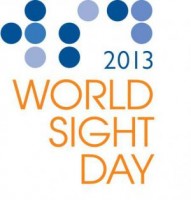The WHO estimated in 2012 that there were 40 million blind people in the world (with vision so poor that they are greatly dependent on others for help with daily living) and another 246 million suffer from Visual Impairment. 90% of these blind or visually impaired people live in the developing world1.
Worldwide, cataract is the leading cause of blindness while uncorrected refractive errors are still the main cause of visual impairment. 80% of these causes can be either treated or cured.
In the West we tend to underestimate the huge impact that disabilities such as blindness have on people’s ability to function independently. Families have to be willing & able to assign a family member to look after a blind person. This can have a negative impact on a family’s economic activity at planting and harvest times. The one assigned to be the carer is often a child, who then misses school and never reaches their full potential.
Prevention and treatment
The vast majority of cases of blindness can either be prevented or treated. Prevention is possible through early detection and treatment of such diseases as glaucoma, trachoma, vitamin A deficiency, river blindness, “wet” Age Related Macular Degeneration & diabetic retinopathy.
Treatable causes of blindness include cataract & trichiasis (which can be treated with lid rotation surgery).
In the last 20 years, there have been significant impacts on both the treatment & prevention of blindness. Diseases such as River Blindness (Onchocerciasis) have been largely eradicated in West Africa. This was done through a World Bank programme concentrating on controlling the Black Fly vector & a well organised distribution programme of Ivermectin tablets to reduce the disease burden in the human population.
Trachoma has been controlled & probably eradicated in countries such as Morocco & Ghana. This was through a sustained programme of distribution of the antibiotic Azithromycin.
Cataract blindness remains a challenge, but the situation has greatly improved with cheaper & more effective operations such as sutureless posterior chamber lens implants. This needs each individual patient to be operated on by a surgeon supported by a functioning health infrastructure with a working supply chain. When all these are in place, the centres that offer these services are often overwhelmed by the demand as people can “see” the good results of recovered independence due to restored sight.
Countries such as India lead the way with well-developed charitable sectors that have largely solved the problem of providing affordable access. Many of these are Christian charities who are supported by effective health structures with an internal supply chain for medications & materials. These local manufacturers are now able to export to other parts of the world.
In parts of Sub Saharan Africa lack of reliable supply chains can limit the viability of localised cataract services. Organisations such as Christian Blind Mission International have historically helped to address this problem.
There is work to be done!
Sadly despite all this progress, there is still much to be done. As international coalitions such as “Vision 20/20” point out, we face an ever increasing mountain of blindness due to absolute population growth and also to the increasing proportion of the elderly within the population. It is an on-going tragedy that in many parts of the world, people still do not have access to cheap & effective treatment for their cataract blindness. Many Christian doctors over the years have been involved in this work (and there are several CMF members overseas today) but the size and challenge of the task will need more local doctors and health workers to take this on. With appropriate training and planning, cataract treatment programmes can become self-funding and can have a positive health impact that goes beyond the effort needed to run them.
We have the wonderful example of Jesus’ care and compassion for the blind and stigmatised2,3, which we have the privilege of following as Christian doctors today. As we work for Him, restoring physical sight, we point to Him as the Light of the world, who freely gives the light of life.
References:
- WHO Fact sheet 282, June 2012.
- Luke 18 v35-43
- John 9 v1-7
- John 8 v12
Posted by Dr Andrew Perkins
GP and CMF Member
(Andrew worked as an ophthalmologist in rural Mali, West Africa for many years until 2007. His work was generously supported by CBMI)




